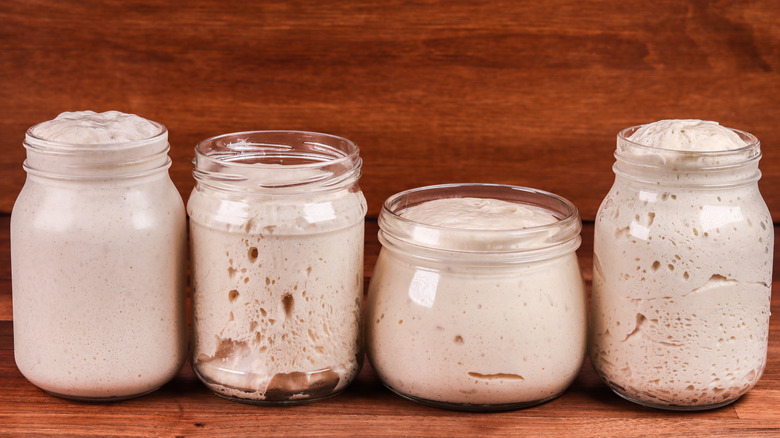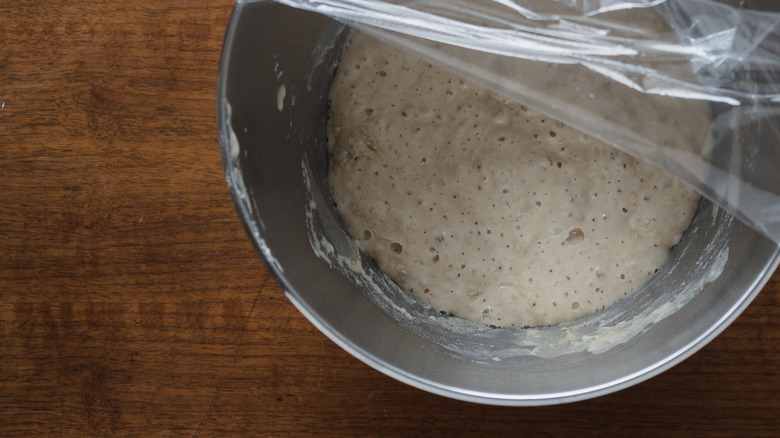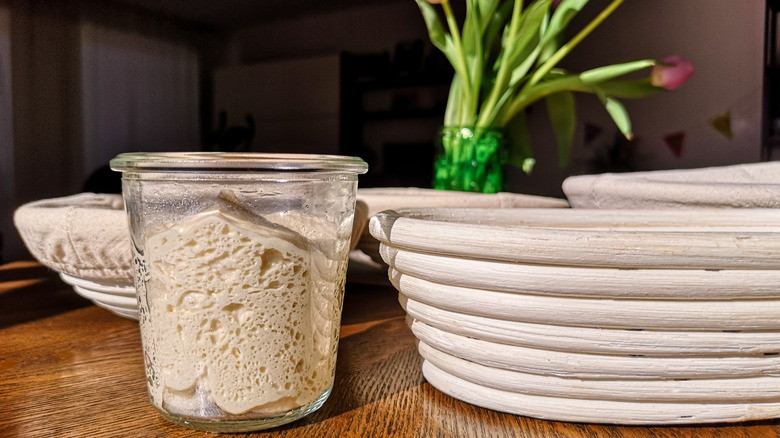Biga Vs. Poolish: Is There A Difference?
Baking bread can be a dense and complicated realm to dive into for any cook or baker. One of the most intimidating aspects to understand is leavening agents. Britannica says that leavening agents are substances that cause doughs or batters to rise or expand by various means. KitchenAid notes that leavening agents include chemicals like baking soda or baking powder, but also whipped egg whites, which incorporate their own airy structure. One of the most common leavening agents used in bread is yeast. Even that isn't as simple as it seems though.
Most bakers are already familiar with commercial yeast, but that comes in several forms. Bakers yeast, instant dry yeast, and cake yeast are all different forms of the same strains of yeast cells. Then there's sourdough, the finicky source of leavening for recipes like no-knead sourdough bread or sourdough scones, that comes from cultivating wild yeast, per The Pantry Mama.
Modernist Bread says that another category of leavening agents is preferments like poolish and biga that come with their own set of quirks. They each also have their own unique qualities that set them apart from one another.
What is a preferment?
According to Modernist Bread, poolish, biga, and sponge are three different types of preferments. Preferments are a type of leavening agent that is made using a portion of flour and water that is subtracted from the rest of the dough's total ingredients. It's then combined with a small amount of yeast, which starts feeding on the flour's sugars before the whole thing is added to the rest of the recipe.
Sourdough & Olives claims that biga was invented by Italian bakers in the 19th century when commercial yeast was first widely available. These bakers wanted to take advantage of the speedier fermentation periods of commercial yeast, but found that the resulting breads often lacked flavor. They were more accustomed to the complex tang of sourdough, and so created biga as a means to have complex flavors and a quicker fermentation period at the same time. Today, biga can be a great option for those looking to expand their basic baking repertoire, or those who typically use sourdough, but don't have as much time to prep.
Some recipes may call for a poolish, though, over a biga, so it's important to know the difference between these two preferments.
The difference between poolish and biga
The main difference between these two preferments is their hydration levels. Biancolievito points out that poolish is most often a very wet, almost soup-like starter. Bigas, on the other hand, are far more stiff and dry. According to Modernist Bread, a wetter preferment like poolish will typically blend more easily in the final dough. Yeast is also typically more active in moist environments, and so a poolish will require a shorter fermentation period, notes Biancolievito. A biga will develop more complex aromatics and flavors, though, if you have the time for it.
Modernist Bread adds that not all cookbooks and recipes will refer to poolish and biga uniformly. A poolish will typically have equal parts water to flour, but some recipes diverge from this. That said, the main qualities of the final dough never differed too much because of these variations, and so it's more important to make sure that the ratios and baker's percentages of the final recipe are being followed.


